Janet: Well, I don’t like men with too many muscles.
Frank N. Furter: I didn’t make him— for you!
(from 1975’s THE ROCKY HORROR PICTURE SHOW)
As any readers of this site no doubt know, Fede Alvarez’s EVIL DEAD is hitting theaters nationwide this Friday. The film is ostensibly a remake of Sam Raimi’s 1983 film about five people who unwittingly unleash a demonic force while vacationing at an old cabin in the woods. Reviews have been quite positive, and the endorsement of Sam Raimi and Bruce Campbell, along with the reports that the film uses virtually no CGI, have led to EVIL DEAD (2013) being one of the few recent remakes that longtime genre fans are actually anticipating.
For the most part.
There has been some vocal criticism of the film from the “no remakes” crowd, who’ve made it a point to scoff proudly at the “The Most Terrifying Film You Will Ever Experience” claim plastered across the new film’s poster art. To many horror fans, the endorsements of the original EVIL DEAD’s production crew are nothing more than lip service to make more money, and the mere use of the EVIL DEAD name to produce something that doesn’t involve an over-the-top performance by Bruce Campbell reeks of cult film blasphemy.
Never mind that if the film wasn’t called “EVIL DEAD,” and was just another movie about kids getting offed in the forest, it would be judged exclusively on its’ solid red-band trailer. (Of course, a movie of the same nature not using the EVIL DEAD name wouldn’t get nearly the visibility.) Sure, some naysayers will play the “it’s been done before and I only watch original ideas” card, but the same criticism can be leveled at the original EVIL DEAD, with it’s premise often mentioned in the same breath as 1970’s EQUINOX — Raimi’s film just did it in a unique, creative way in the same way one hopes the new EVIL DEAD uses, by investing new ideas into familiar turf.
But these horror fans are the Janet Weisses of the world, forced into in an old house filled with the types of newfangled monstrosities that produce remade Rockys out of the Charles Atlas advertisement of genre classics. The audience for these Rockys isn’t the “old-school” Janets but the Frank N. Furters and assorted fans of the new, who are aware of the vintage (even if only by name) but are just fine with seeing it in a new form.
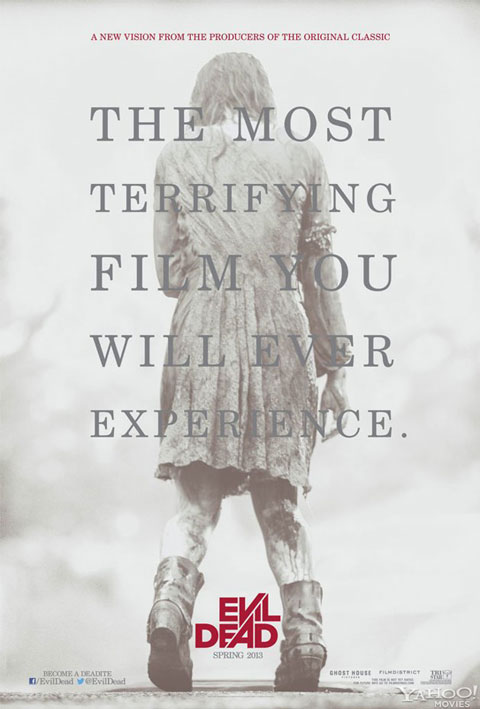
At the Society for Cinema and Media Studies conference in Chicago a few weeks back, I was fortunate enough to listen to a presentation by Joseph Tompkins, who teaches at Allegheny College in Pennsylvania, who is currently researching the contemporary horror movie industry. His presentation “’Reimagining’ HALLOWEEN: The Horror Movie Reboot as Critical Industrial Practice” applied specifically to Rob Zombie’s take on the John Carpenter-helmed classic, but served as a healthy representation for other genre franchises as well.
I had a chance to speak to Tompkins about EVIL DEAD and horror franchises in general via e-mail.
P: How do you define the difference between a “reboot” and a “re-imagining?”
J: Well, I tend to approach this distinction from an industrial perspective, which is to say I’m most interested in how these sorts of productions (remakes, reboots, re-imaginings) perform particular institutional functions for studios as part of their overall business plans. For instance, while fans and critics may tend to focus on issues of evaluation or interpretation (that is, whether remakes are “better or worse” than their originals), my interest stems from the commercial reasons these films get made in the first place. And so when thinking about the difference between remakes and reboots, for example, one way to approach this distinction is in terms of their industrial role. As others have pointed out, the reboot is basically a franchise-specific concept: it describes a process of restarting (or “re-imagining,” if you will) a series of films, as opposed to simply replaying one specific film. And so when thinking about reboots like HALLOWEEN, for instance, the goal is to set in motion a succession of films in the hope of rejuvenating the franchise as a whole—to revive the brand in light of new markets and business strategies.
Now, there are a number of ways that studios attempt to do this—the most common being an attempt to somehow disconnect the franchise from what came before; for example, introducing a new storyline or a new take on characters. Oftentimes, this entails returning the franchise to “the beginning” in order to restore a sense of novelty while capitalizing on the memory of the preceding films. For this reason, the HALLOWEEN reboot revolves around the never-told origin story for Michael Myers, and this is reminiscent of other reboot cycles (e.g., the James Bond reboot starring Daniel Craig or the Christopher Nolan BATMAN trilogy), which also seek to return their franchises to origin points with the goal of forging a new sequence of films. In this sense, reboots serve different purposes than sequels, prequels or remakes: whereas the latter often maintain explicit continuity with the films that came before, reboots usually set out to nullify that history.

P: Why do you think studios produce remakes like EVIL DEAD when the original property is such a well-known cult film?
J: Actually, this is precisely the reason why studios set out to remake such films—because they have a well-established cult reputation among genre fans. This doesn’t mean that studios are actively looking to court those fans, but rather that they’re looking to capitalize on the cult reputation that surrounds these titles. In a way, the most important thing is their commercial status as cult films, not so much their actual fan base.
Granted, this seems to smack against the idea of cult films in the first place. Cult movies are usually considered films that somehow find popular appeal despite not having any commercial or studio backing. For this reason, cult films are often characterized as “underground” as opposed to “mainstream,” and thus said to appeal to devoted fans as opposed to “average” moviegoers. But with the case of remakes (and reboots), the main point is leveraging this underground appeal so as to get audiences reinvested in the brand. From a studio perspective, it doesn’t really matter if audiences have firsthand knowledge of the original EVIL DEAD, if they’ve actually seen it; but rather what matters is that audiences have a sense of the brand’s “legendary” status as a “cult sensation” (as one press release for ED put it).
P: Do you think that there’s a difference in marketing when it comes to remaking a film that fans don’t have particularly strong feelings towards (like PROM NIGHT) as opposed to a film like EVIL DEAD, which has a very rabid fan base?
J: Yes, I do. Marketing for films like EVIL DEAD and HALLOWEEN tend to emphasize how these titles are part of an established tradition with a fervent fan base. For instance, they’ll usually include directors or creative personnel that maintain some sort of connection to that history (Sam Raimi serving as producer for the EVIL DEAD remake, for example, or Rob Zombie declaring his own fan attachments to the HALLOWEEN films in interviews). In turn, this becomes a means to establish credibility with genre fans—as if producers are saying, “hey, we’re fans too, we’re doing this because we love the originals as much as you do and not because it’s commercially expedient.” At the same time, given the fact that remakes/reboots aren’t out to necessarily recapture the original fan base, but rather draw in new fans with the allure of cult sanctification, the risk of upsetting fans who may not consider it a worth while endeavor to remake such films is mostly irrelevant. Again, the most important thing is generating cult enthusiasm, getting fans re-invested in the brand, and breeding discussion of the franchise. Regardless of fan attitudes toward remakes, they’re still an occasion for restoring consumer investments.
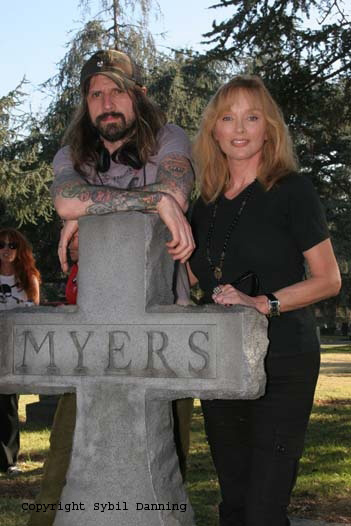
P: Is there anything you think that can be done from a marketing perspective to convince those who love the “original” to see a “remake?” And should they bother?
J: I think the strategy most often used entails drawing a vague connection to the original (in order to invoke some sort of iconographic memory of it) while at the same time ensuring audiences that the new version will not really be a straight remake but rather bring something “fresh” to the brand. For instance, the EVIL DEAD remake is being advertised as a Sam Raimi production, even though he’s not actually directing. Nonetheless, the connection potentially establishes credibility with long-time genre fans (who recognize his name and are familiar with his films). At the same time, the publicity has underlined the fact that new technological developments now allow for even more graphic special effects, and thus the remake is being advertised as one the most gory films ever made. Obviously, this is an attempt to curry favor with self-identified “hardcore” fans. But whether it actually works is open to debate. I can’t actually say.
P: Overall, would you say the tactic of reviving popular franchises that, at least to the younger audiences that are more likely to attend horror films in theaters, are more known by reputation rather than actual experience from viewing has been successful financially? Other than the three “new” TEXAS CHAIN SAW MASSACRE films and the second Rob Zombie HALLOWEEN film, none of the recent relaunches (NIGHTMARE ON ELM STREET, FRIDAY THE 13TH, THE STEPFATHER, etc.) have made their way past the first re-entry.
J: I think the question of “success” can be complicated a bit here. Certainly, box office numbers are important (as are ancillary revenues from home video, DVD, and the like), as well as the possibility that even more films might be produced as part of the reboot cycle. But if the real economic goal is to renew interest in the franchise as a whole, then success can equally translate to getting a new generation of audiences interested in an erstwhile franchise or “brand name” that’s been perceived to be dormant in some way (e.g., NIGHTMARE ON ELM STREET or FRIDAY THE 13TH) or, alternatively, getting established fans to to revive their interest in a lagging franchise to the extent it’s been written off as “dead” or past its glory days. In other words, success goes beyond box office receipts and additional films to include renewed consumer-fan interest at the *franchise* level, that is, at the level of the brand itself as opposed to individual films. And here again you can see why cultivating a sort of “cult” relationship is so important here, as reboots attempt to create (and/or renew) a sense of brand/franchise loyalty.
Thank you to Joseph Tompkins for the interview!
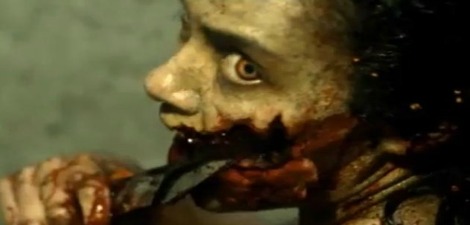
When it all comes down to it, it shouldn’t matter to audiences that the new EVIL DEAD movie has Raimi’s name involved or that it uses CGI or even that it’s called “EVIL DEAD” at all. What should matter is that it’s an entertaining horror flick, and that’s something only audience reaction will be able to determine. If the eight letters that make up “EVIL DEAD,” however, are the only thing keeping you away from a great horrific ride, you may just want to take off the curmudgeon pants and let the Frank and Rockys of the present take a crack at you. It worked out all right for Janet.
(Well, sort of. I mean, it didn’t really, and, er… I’m afraid the analogy breaks down here. But still, Janet had a good time for a while, and that’s really what counts, isn’t it?)
– Paul Freitag-Fey
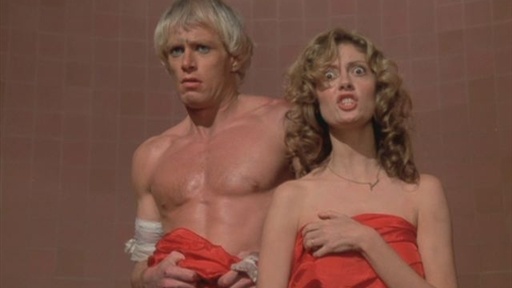
- [THE BIG QUESTION] WHAT’S YOUR FAVORITE FEMALE ENSEMBLE IN MOVIES? - July 22, 2016
- [IN THEATERS NOW] THE BOY (2016) - January 24, 2016
- Cult Movie Mania Releases Lucio Fulci Limited Edition VHS Sets - January 5, 2016

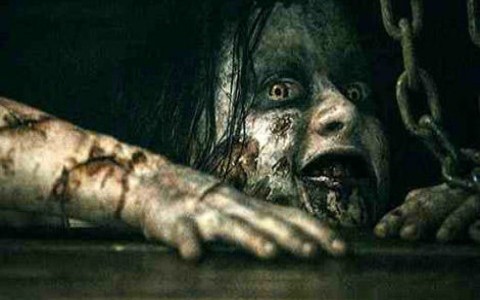




No Comments